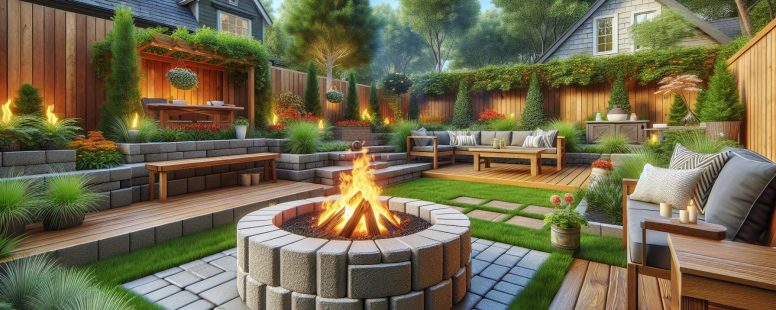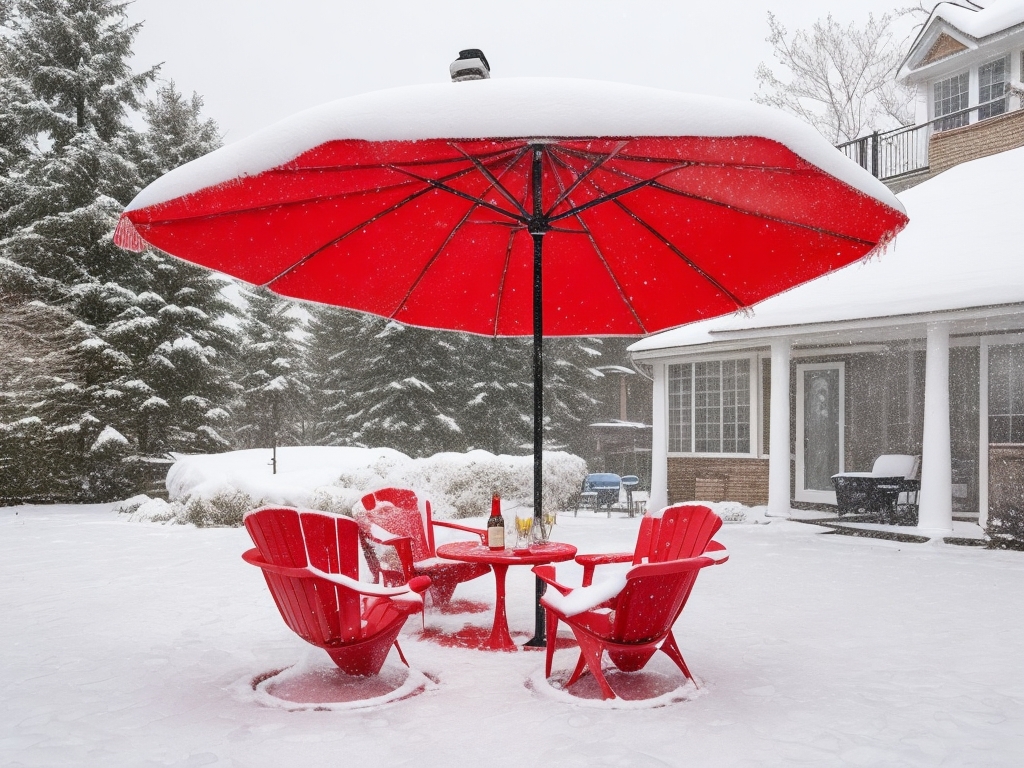Building and Maintaining Your Retaining Wall Block Fire Pit: A Comprehensive Guide
Types of Retaining Wall Block Fire Pits
Building a fire pit using retaining wall blocks gives you a diverse choice of materials to choose from. Let’s examine three of them: traditional stone blocks, concrete blocks, and engineered blocks. Each of these materials provides a unique aesthetic and has different functional aspects that are critical when constructing a fire pit.
Traditional Stone Blocks
Traditional stone blocks bring a rustic, natural appeal to your backyard fire pit. They’re derived from nature, making each piece unique in size, shape, and color. These blocks typically endure high heat well, crucial for the long-life of your fire pit. But, keep in mind, installing a traditional stone block fire pit may require professional skill due to stone’s natural irregularity.
Concrete Blocks
Concrete blocks serve as a versatile and cost-effective option for your retaining wall block fire pit. Available in various designs and finishes, these blocks offer the flexibility to create a fire pit that complements your backyard’s existing decor. Concrete, highly heat-resistant, provides safety and durability. It’s crucial to remember, if you’re planning a do-it-yourself (DIY) project, a concrete block fire pit is relatively easy to assemble with the right tools and guidelines.
Engineered Blocks
Engineered blocks, made specifically for retaining walls, offer a blend of functionality and aesthetic appeal. These blocks are precision molded, ensuring ease in stacking and aligning. Plus, engineered blocks feature internal compartments that aid in heat resistance and prevent cracking. So, if you’re looking for a stylish, straightforward assembly, an engineered block fire pit could be the right choice for you.
Now that you’ve been introduced to these three types of retaining wall blocks for constructing fire pits, choose the materials that best fit your aesthetic preferences, functionality, and budget. Remember, each material has its unique features – it’s all about finding your perfect match for creating a cozy backyard nook.
Design Considerations for Retaining Wall Block Fire Pits
In making a retaining wall block fire pit a captivating centerpiece in your backyard, decisions on its shape, size, and location are integral. Let’s investigate into these significant components.
Choosing the Right Shape and Size
Your fire pit isn’t just a functional piece, it’s an extention of your outdoor décor. That’s why getting the shape and size right can’t be overstated.
Rectangular and square shaped fire pits, for example, give a modern allure, making them ideal for contemporary outdoor spaces. Round fire pits, on the other hand, bring a touch of tradition and coziness and they’re great for intimate gatherings.
Size matters too. For larger backyards, a fire pit with a diameter of 36 to 44 inches strikes the perfect balance. Not too big to overwhelm your space, not too tiny to go unnoticed. Having a fire pit radius of 18-20 inches provides ample room for logs while ensuring heat is distributed evenly. Bear in mind, local regulations may stipulate the maximum permitted size for backyard fire pits.
Location and Safety Considerations
Locating your fire pit well, while maintaining safety, is crucial. An ideal fire pit location is level, stable, and at least 10 feet away from your house or any combustible materials. You ought to clear away overhanging branches, and avoid placing the fire pit under covered areas to prevent potential fire hazards.
Placement in the path of prevailing winds should be avoided, ensuring smoke doesn’t drift indoors or towards your guests. Also, contemplate the nearness to pathways or entrances, as well as the visibility from inside your home. For safety reasons, having a fire extinguisher and a fire blanket close by isn’t overkill but a necessity.
Making the right design decisions can be the difference between an eyesore and an outdoor masterpiece. Your retaining wall block fire pit, when well-crafted and strategically located, can become the main attraction of your backyard, bringing warmth and beauty to your outdoor living space.
Installation Process
Moving forward on your journey to build a retaining wall block fire pit, let’s discuss the necessary steps, tools, and materials for this project. Trust us, with the right information and preparation, this process becomes a walk in the park.
Necessary Tools and Materials
Here are the tools and materials required for this project:
Tools:
- Shovel: Digs the pit and levels the ground.
- Tamper: Compacts the base layer.
- Level: Ensures blocks are set straight.
- Rubber mallet: Taps blocks into place.
Materials:
- Retaining wall blocks: Premium concrete or stone blocks provide durability.
- Paver base: Creates a stable and level base.
- Drainage gravel: Prevents water accumulation within the pit.
- Construction adhesive: Binds the fire pit blocks together.
Ensure you’ve collected and confirmed all these tools and materials before you begin. Why? Well, starting a project prepared eliminates unnecessary interruptions.
Step-by-Step Installation Guide
Let’s get your hands dirty with the step-by-step guide for a retaining wall block fire pit installation:
- Mark the Fire Pit Location: After finalizing the fire pit location (remember we discussed safety considerations like distance from flammable materials?), use landscaping spray paint to outline your fire pit shape on the ground.
- Dig the Fire Pit Foundation: Now, grab your shovel, dig out the marked area to a depth of 6 inches, and level the surface using your tamper.
- Install the Paver Base: Next, fill the pit with a 2-inch layer of paver base, compact with the tamper, and check the level. This ensures a solid and even foundation for your fire pit.
- Set the First Layer of Blocks: Start setting your retaining wall blocks onto the paver base. Confirm that each block is level; it helps to keep the entire structure stable.
- Install Additional Layers: Repeat the process until you achieve the desired height. Stack each layer in a staggered pattern for better stability – a professional trick to make fire pits last longer.
- Apply Construction Adhesive: Finally, apply construction adhesive to bind the layers of blocks together. Give it 24 hours—the wait makes sure the adhesive dries completely before you start your first fire.
Remember, with every step, strive for precision. It’s better to spend extra time ensuring accuracy, as it directly impacts the safety and longevity of your fire pit. Now, it’s time to grab those marshmallows and enjoy cozy nights by your newly installed fire pit.
Maintenance and Care Tips
Keeping your retaining wall block fire pit in top shape requires some essential tasks. Let’s investigate into a couple of critical areas that would ensure your fire pit serves you for many moonlit nights to come.
Regular Cleaning and Inspection
A regular cleaning routine goes a long way in maintaining the aesthetic and function of your fire pit. Periodically removing ash, soot, and residue helps to prevent stains and maintain the inner glow of the pit. Use a broom and a dustpan to sweep out the fire pit gently, ensuring you don’t chip any blocks.
Also, regular inspection spots potential issues early. Look out for signs of wear and tear on your retaining wall block fire pit. Loose stones, cracks or chips in the wall imply that it’s time for some repair. A simple act as reapplying the construction adhesive can go a long way in enhancing the lifespan of your fire pit.
Given the high temperatures that fire pits can reach, it’s also essential to inspect for signs of heat damage. Warping or discoloration of the blocks are potential signs of problems that, if caught early, can prevent extensive repairs.
Seasonal Maintenance
In preparation for use during different seasons, your fire pit needs special attention. During the rainy season, consider covering the fire pit with a suitable waterproof cover. This helps to protect the interior from water damage and prevents the accumulation of debris in the pit.
In the winter months, if you’re not using your fire pit, it can be beneficial to store the fire pit accessories indoors. This helps to avoid rusting and prolong the life of your equipment.
During the warmer months, when your fire pit likely sees the most use, a thorough cleaning before the entertaining season begins is highly advisable.
Remember, your retaining wall block fire pit is more than just a source of heat. It’s an essential centerpiece of your outdoor living space where great memories are forged. Keeping it in high quality condition requires vigilance, but the payoff—seasons of safe, warm, outdoor gatherings—is well worth the effort.
Conclusion
So, you’ve got the scoop on creating and maintaining a retaining wall block fire pit. It’s clear that with the right design choices and regular upkeep, your fire pit can become the star of your backyard gatherings. Remember, align your material choices with your personal style, functionality needs, and budget. Don’t forget the importance of regular cleaning and seasonal maintenance to ensure your fire pit’s longevity. By staying vigilant with these practices, you’ll ensure your fire pit remains a safe, cozy, and inviting centerpiece for years to come. Now, it’s time to get started. Your perfect outdoor gathering spot awaits!
- When Is the Best Season to Sell Outdoor Furniture in the US? Ultimate Seasonal Guide - October 26, 2025
- When Is the Best Season for Backyard Yoga Classes? Find Your Perfect Outdoor Yoga Time - October 26, 2025
- What Tools Do I Need for Fence Installation Work? Essential Gear for a Smooth DIY Fence Project - October 26, 2025




